UCAN Panel Discussion Examines Cultural Solidarity Between African-American and Latinx Communities
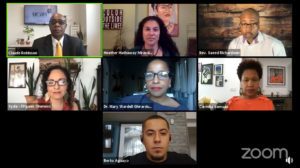
One of the ways in which systemic racism will be dismantled is through solidarity: between whites and persons of color, yes; but equally as important, between African-American and Latinx communities. On Sept. 22, UCC-related UCAN in Chicago and Organic Oneness — a grassroots social justice organization based out of Chicago and Minneapolis — hosted A Conscious Call for Cultural Solidarity. The 90-minute panel discussion, also supported by the Latino Policy Forum, examined what cultural solidarity and building a conscious collectiveness means in African-American and Latinx communities.
“As the executive vice president of external affairs and diversity at UCAN, I’m tasked with being an inclusive, disruptive and equity-focused leader,” said conference co-organizer Claude A. Robinson of UCAN. “I must bring together diverse groups of individuals to create ideological exchanges that can lead toward behavioral change. This session was to build more meaningful dialogue between Black and Brown communities across the nonprofit sector — the purpose of cultural solidarity to fight systems of oppression.”
The discussion was moderated by Mary Wardell Ghirarduzzi, Ed.D., an associate professor and vice provost for diversity engagement and community outreach at the University of San Francisco. Panelists included:
- Camita Semaan, founder of The Surge Institute based in Chicago and Oakland, Calif. Surge is dedicated to the empowerment, advancement, growth and achievement of youth and communities of color.
- Berto Aguayo of the volunteer-led #Increase the Peace Chicago. #IncreaseThePeace develops young leaders and promotes peace through leadership development, community organizing, and advocating for solutions that tackle the root causes of violence.
- Heather Hathaway Miranda, a scholar and activist based in Chicago.
- The Rev. Saeed Richardson, programs and operations officer of the Samuel DeWitt Proctor Conference and senior pastor of The First Baptist Church of Waukegan, Ill.
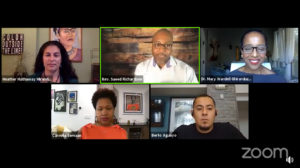
Wardell Ghirarduzzi, who is also founder and principal of the DEI Leadership Group, opened the discussion by calling on the panelists to examine how to build solidarity during “these times of scarcity” in a society that was purposely constructed with barriers for persons of color. Society, she said, has invested in certain communities over others, allowing those communities to thrive and prosper, while developing public policies that created deeply marginalized inequities and systemic forms of oppression and suppression.
“We were taught to believe that racism was an individual act, that it happened between one person and another,” she said. “We know better than that now.”
Semaan, the only self-described Southerner on the panel, said that the current climate creates within her a “moment of dissonance.” On the one hand, she said, “I’m hopeful — there’s a raised national consciousness, which is something to give us hope.” But the current elevation and amplification of long-time conversation and movements also leaves her with skepticism. “Systems are designed to right themselves,” she said, designed to fulfill what they were designed for — specifically keeping institutional racism in place.
Black Vs. White as Construct
Wardell Ghirarduzzi introduced the concept of the “Black vs. White” as a social construct useful in dividing persons of color. She shared a disturbing statistic about the Asian diaspora in the San Francisco area. Asian-American and Pacific Islander children with lighter skin had the same educational outcomes as their white counterparts; whereas, darker skinned Asian-American and Pacific Islander children had the same outcomes as Black children “because of their visual proximity to Blackness.”

Aguayo observed that the national racial hierarchy — white, Latinx, Black (in that order) — is part of a white privilege strategy. “The impact that has on African-American and Latinx communities is gigantic,” he said. As a solution, he advocated for truthful, honest conversation within the communities — and between communities — which is needed to help bring about racial healing. “It’s about ACTION,” he added. “Where are you? Are you on the front lines, supporting each other?”
Anti-Black sentiment in the Latinx community makes achieving racial equity more difficult, Aguayo said, especially “when our leaders fail to call out the existence of Anti-Black sentiment in the Latinx community.” In order to get anything done, he said, Black and Brown multicultural coalitions are necessary in order to have the truthful conversations that will lead to the healing work of transformation.
For Richardson, the need for Black and Brown conversations includes “spaces where Black people and Brown people can take issues — they can come together to ask questions you wouldn’t dare to ask in public,” even if the questions aren’t phrased “correctly.” He used the example of the hurt felt by many African Americans when they see Brown people who can move in and out of white communities “because they are not prejudged by the color of their skin.”
Competing Hurts
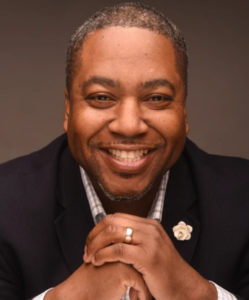
Richardson encouraged his colleagues to go beyond the “common denominator” in organizing. “It’s not just coming around the table, but engaging each other in our differences and similarities,” he said. “See me as a Black, male, CIS gender, married, Christian, etc.,” in light of everyone else.
He highlighted the “pain issues between Black and Brown people. We must be coaches to our own people,” he said. “We sometimes have to challenge the people who set the rules for us; and we have to recognize that we will move forward, but that not everyone will come along.”
Richardson also reminded everyone that competing justice issues can hurt everyone. He cited the current trauma inflicted on Latinx persons because of ICE and the policies of deportation and separation, tandem partners of incarceration of Black persons. “Those same systems [ICE, etc.] are the ones that hunt for Black bodies who are oppressed by police,” he said.
Hathaway Miranda advocated for more leadership coaching, too. “I’ve often considered myself a servant leader,” she said, showing new leaders how to have those difficult, multicultural conversations. As we all learn more, she added, we can be held more accountable for our actions.
‘No One is Coming to Save Us’
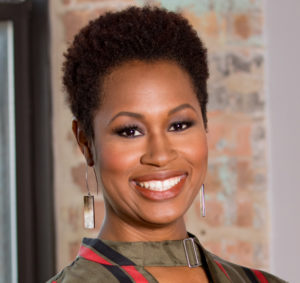
Semaan concurred, adding, “No one is coming to save us.” Within Black and Brown communities, “we have to recognize that solutions already exist — they already exist within our communities. We have to create sacred space for these solutions to grow.”
She called for a return to the sense of urgency that marked earlier social justice movements, and urged everyone to reclaim urgency in the current moment — not just speed, which can be toxic, but intentional urgency. “The success of past social justice movements has been in the intentionality and purpose of those movements,” she said.
For Hathaway Miranda, the need is dual: “We must learn to become comfortable with becoming uncomfortable,” she said. “But we also have to recognize that we must balance both the struggle and the joys inherent in it.”
All of the panelists emphasized what coalition building means. As Semaan put it, coalition building “means that I see you. Being in a relationship with folks means that I have to know you.” She cautioned that “the systems we are trying to change do not want multicultural coalition building” because such coalitions “are dangerous to their survival.”
It’s important to realize, she said, that anyone invested in multicultural work must be prepared for both internal and external barriers, because “we are a product of these social systems.”
The panelists also agreed that building coalitions to break down systemic racism must be long term. “I’m tired of preaching,” said Richardson. “My heart yearns for more action. It’s time to turn conversations into long-standing action” — not just next year or the next election cycle, but multigenerational.
Success of Panel Discussion Calls for Action
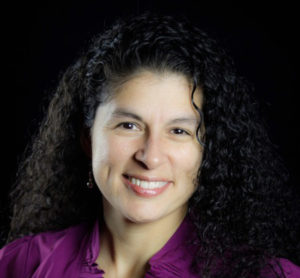
The panel discussion was successful in allowing for honest conversations of the challenges within and between Black and Brown communities, said Hathaway Miranda. The conversation “helped remind me that we need to continue to question and learn history,” she said.
“These conversations are an important invitation to be critically self-reflective and recommit to making necessary, positive change,” she added. “Cultural solidarity, eradicating racism and all -isms, and breaking down white supremacist structures by building relationships with others different from oneself is no longer optional: It is the only must do on 2020’s To Do list.”
As with the other panelists, Hathaway Miranda sees a need for action. “I hope that other organizations and community members will be inspired locally and nationwide, even internationally, to have tough conversations and actually show up for each other in solidarity,” she said.
Richardson said he went into the panel discussion hoping that “the viewers realize the necessity for Black and Brown individuals and communities to see how paramount it is for us to work and sustain action together. All of our concerns — police violence, incarceration, immigration, socioeconomic opportunities, and more — are all levied by the same systemic and institutional forces that thrive on our sustained division, but are dismantled through our collective cooperation,” he said.
Most profound for him was the notion that to more forward, Black and Brown communities must be willing to challenge themselves. “Generally speaking, both of our cultures deeply value, honor, and respect the wisdom of our elders,” he said. “However, we must be willing to challenge and even push at times (tactfully and with love) ideals that promote racist and oppressive thoughts about the other when they arise.
“Many of our elders endured pains and challenges that are beyond compare, and those pains have at times resulted in barriers that prevent us from uniting. As their legacy, it is our plight to challenge and lead through those pains and to respectfully rebuke separation ideology as we unveil opportunities for collective work between Black and Brown folk.”
Richardson added that he hopes for opportunities for Black and Brown people to “truly convene for action.”
“The situation and challenges upon us require a very real coalition-oriented need to create and enact a multi-generational, multi-decade-long strategy to sustain change in our state and country,” he said. “We are situated in the presence of oppressive strategies that have been in development for over 50 years. There is a need for us to do the same. And the strategy requires more than just a plight for the presidency. It requires change in our federal and local judicial systems, legislative bodies, and even local civic entities to perpetuate change.”
A Good First Step
For UCAN’s Robinson, the panel discussion was a good beginning, and the fact that most of the panelists had never met was a plus. “I was grateful to see the panel and moderator model compassion, hope and support for each other,” he said.
But, Robinson added, much more is needed. “The meaning and value of these cross-cultural and cross-industry conversations must be a normal part of building alliance between the Latinx and African-American communities,” he said. “UCAN will continue to do its part to challenge the status quo and fight the evil construct of racism.”
Or, as Richardson reflected, “Let us continue to engage in conversations like this, but also recognize that this is only the first step in a staircase of which we cannot see the top. But understand that we do not have to see the stairwell to be victorious. We simply must be willing to advance, one step at a time.
“We should not push or trample one another, but seek to walk step-by-step together. For when we do, we become a force of power, a change in action, and a deafening sound of unrest that scares the hell out of those forces that strive to keep all of us from reaching the next floor.”
Join Our Mailing LIst
"*" indicates required fields
Follow on Facebook
Hoyleton Time Capsule Reveals Treasure Trove of History - CHHSM
www.chhsm.org
Old newspaper articles, newsletters — some in German, a letter from the past describing an effort that would become a successful CHHSM ministry. These were among the treasures discovered during the ...